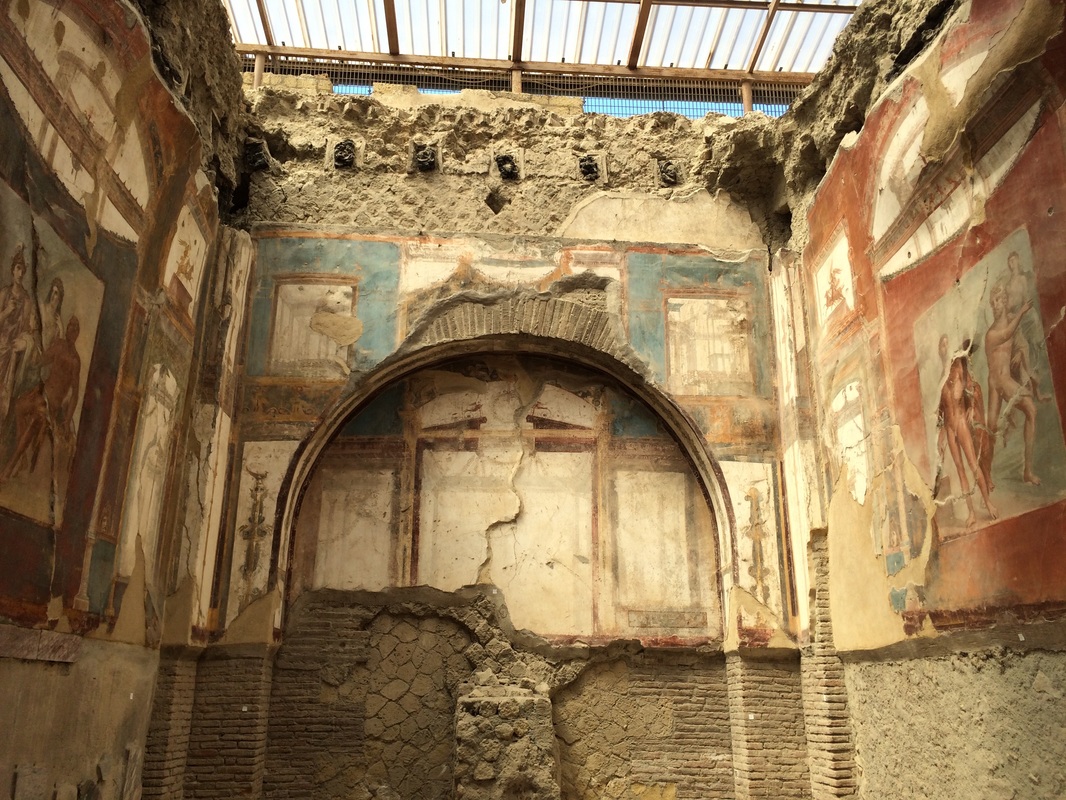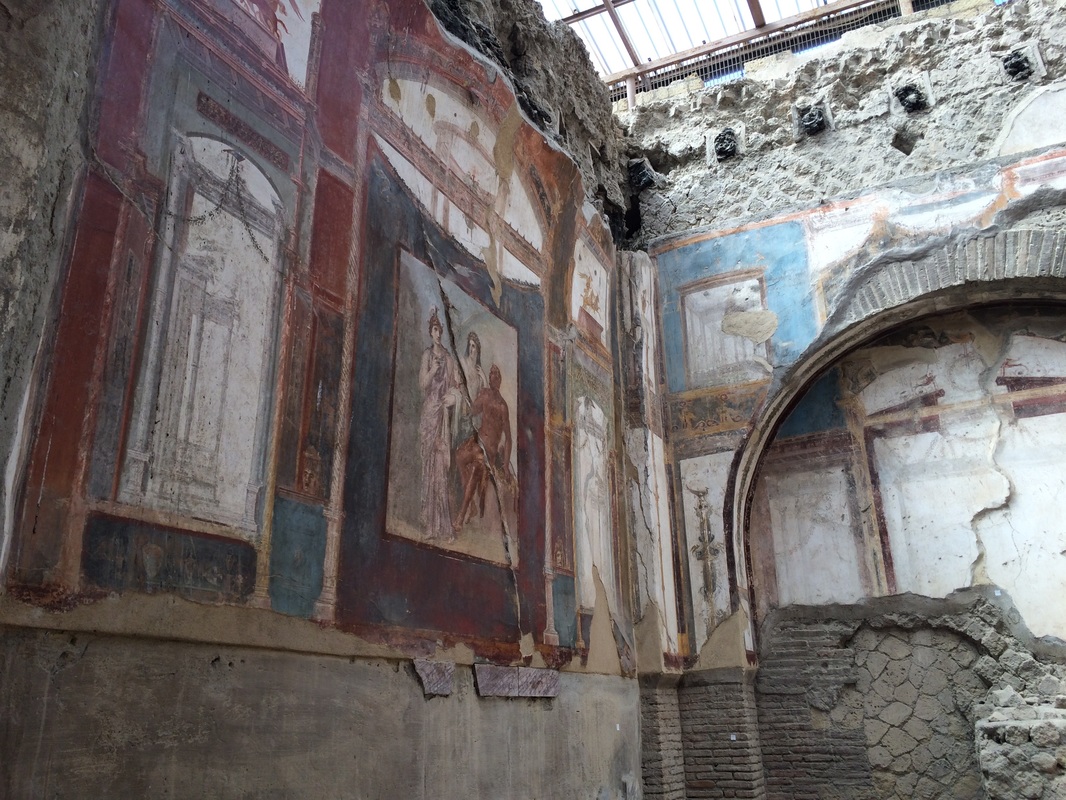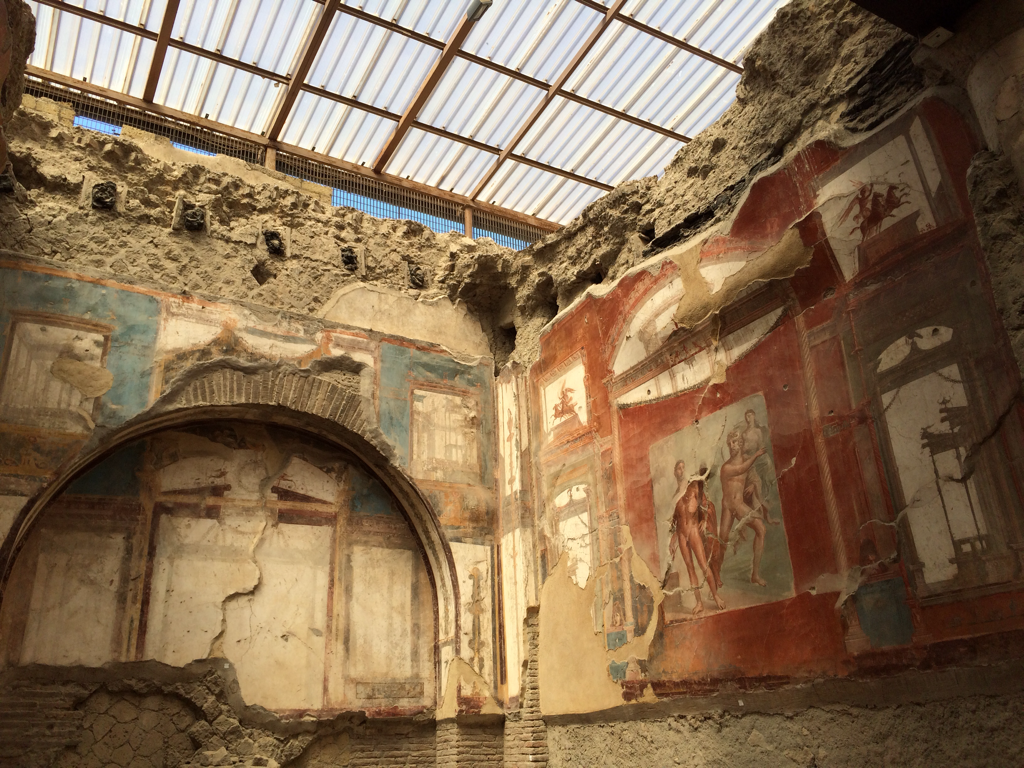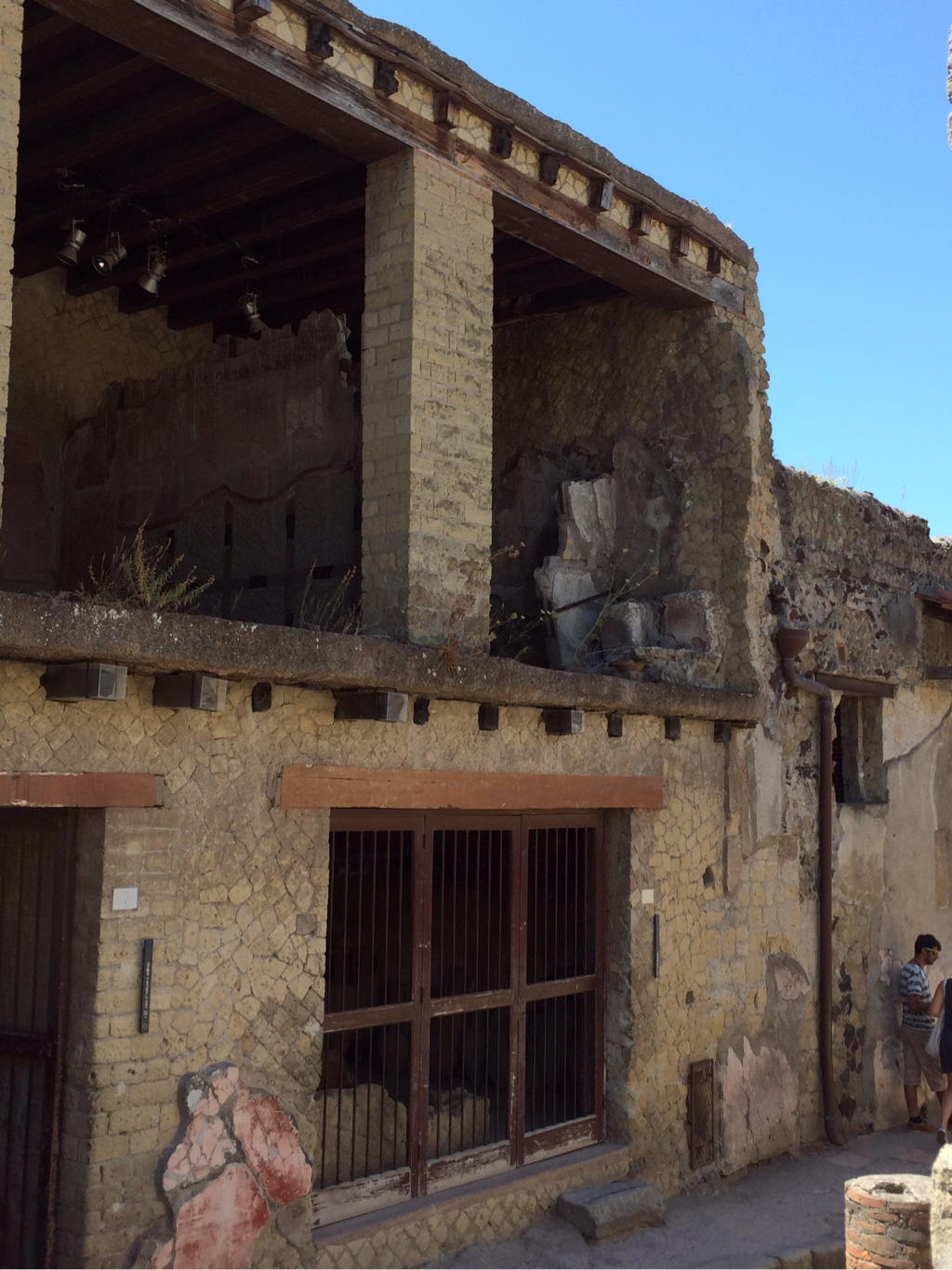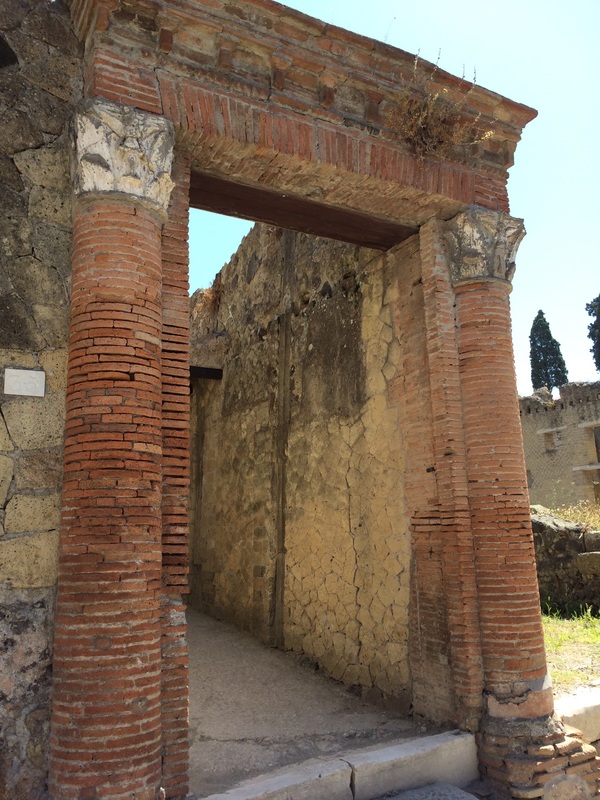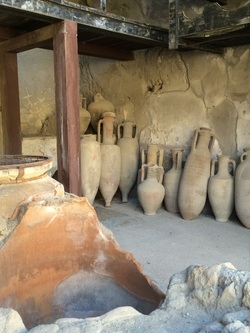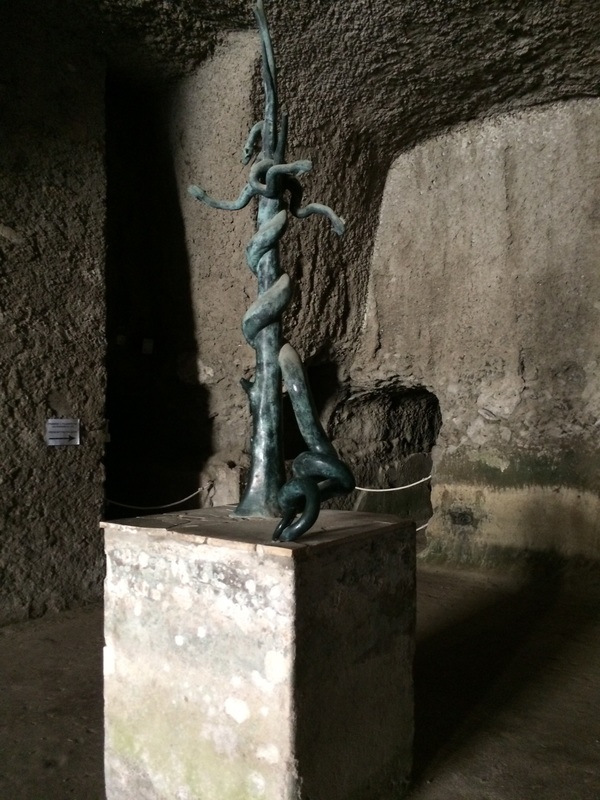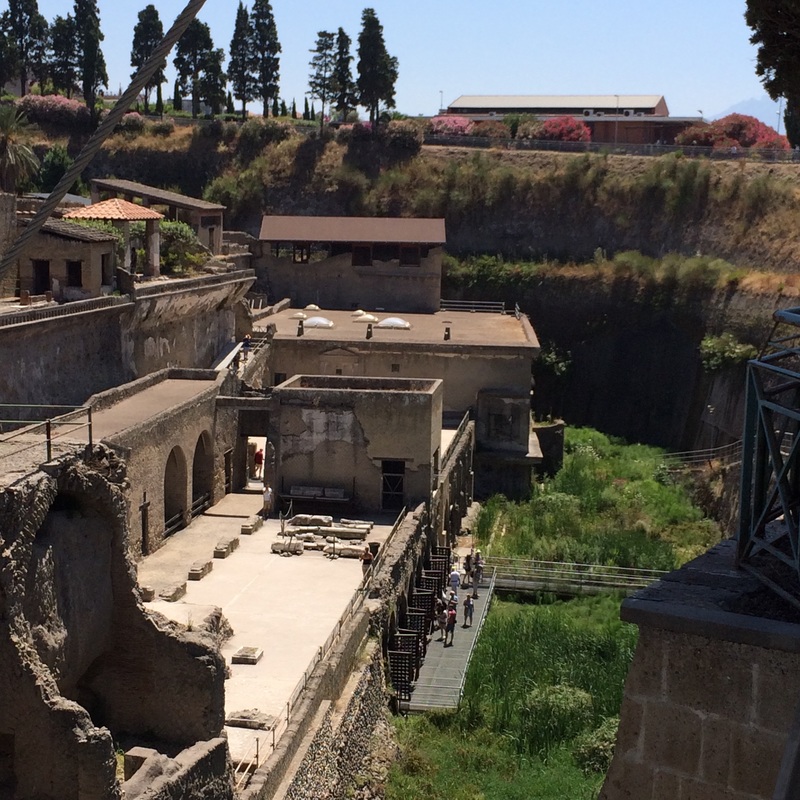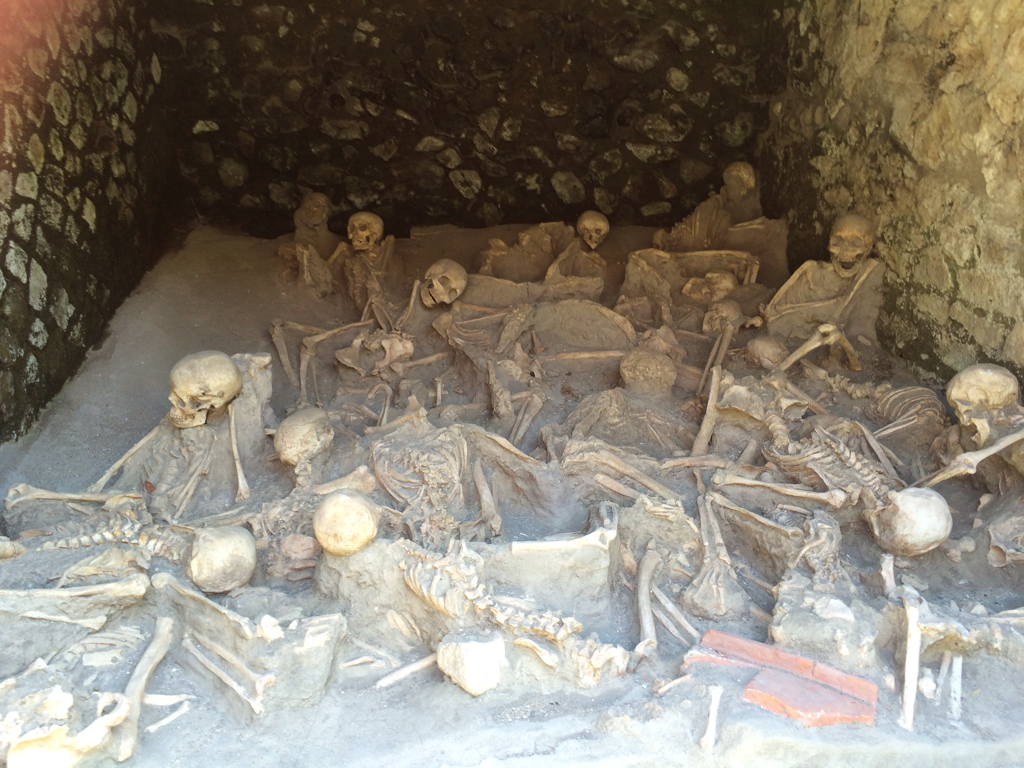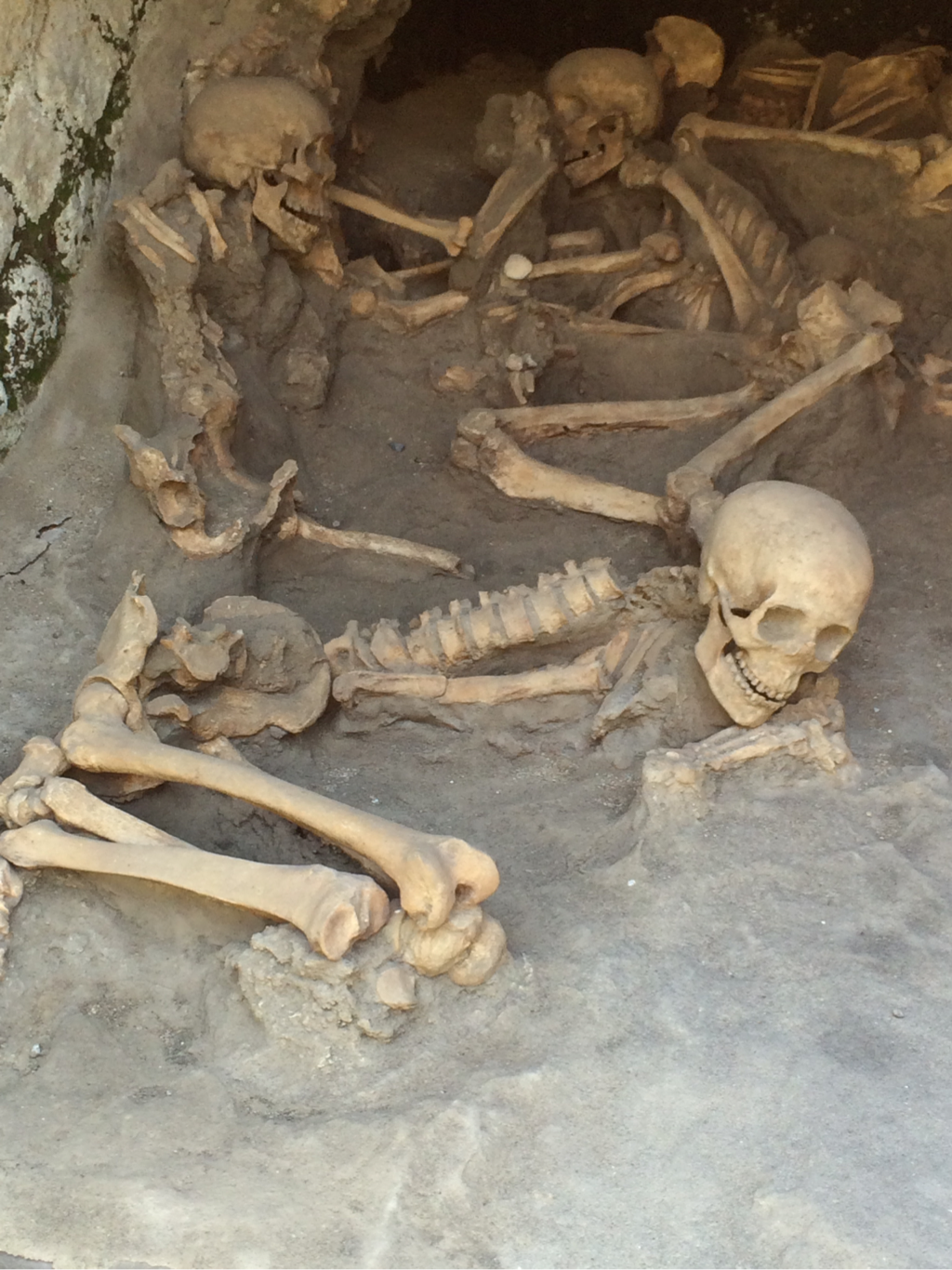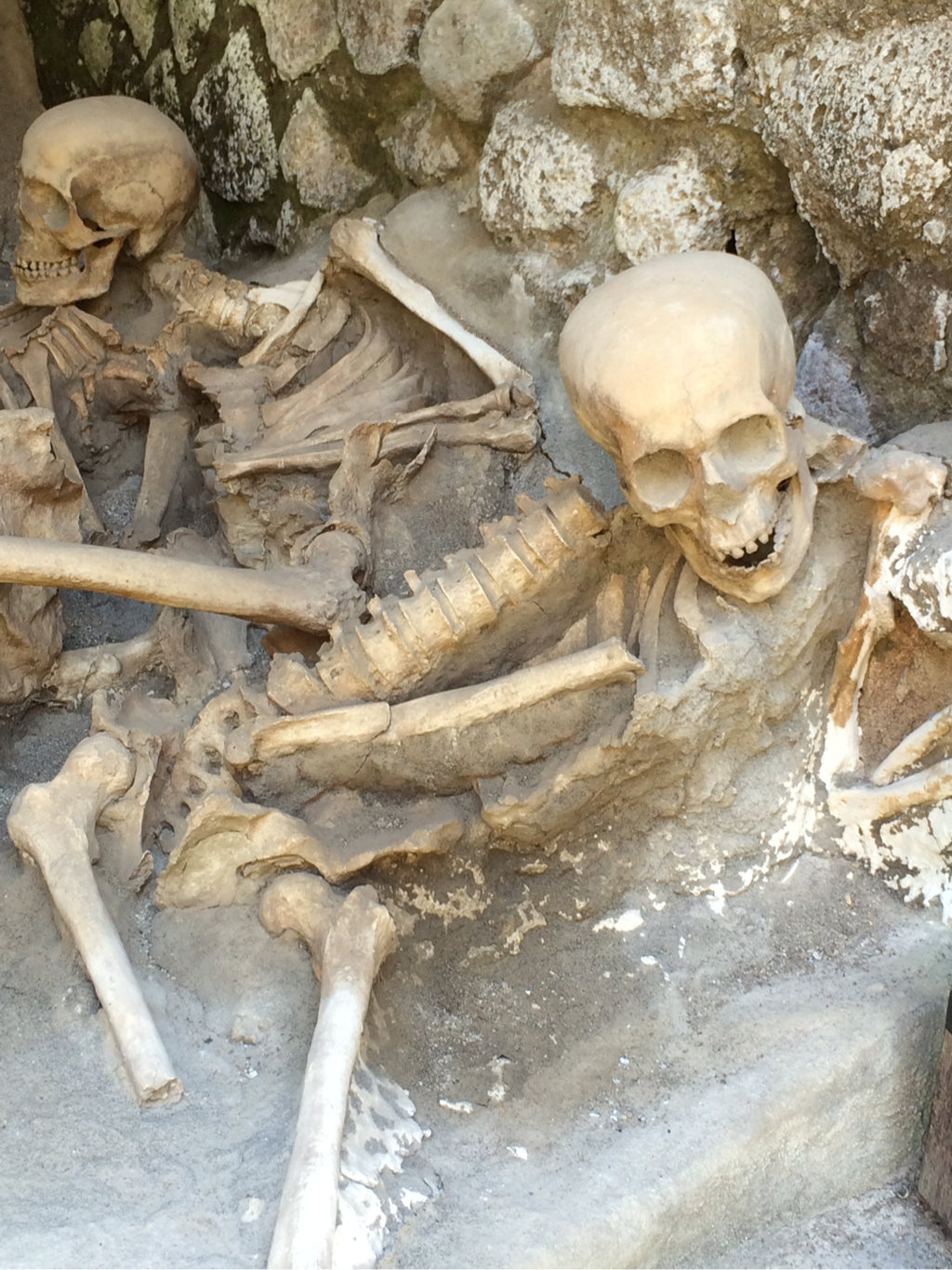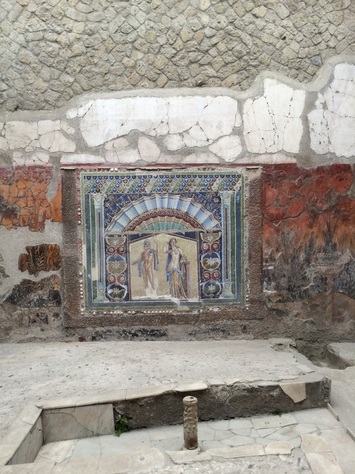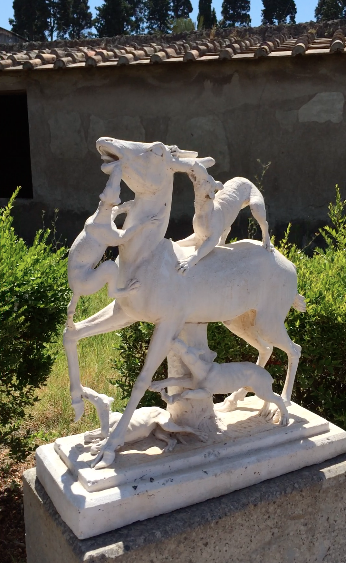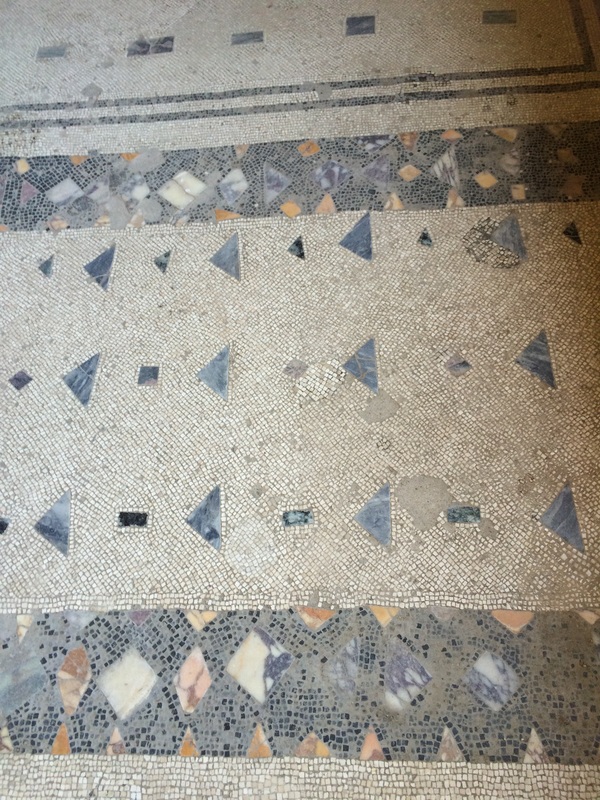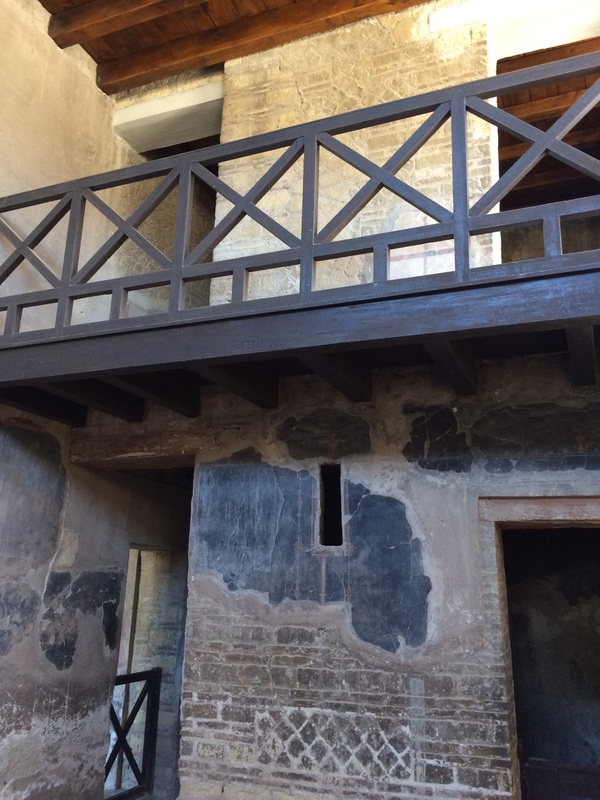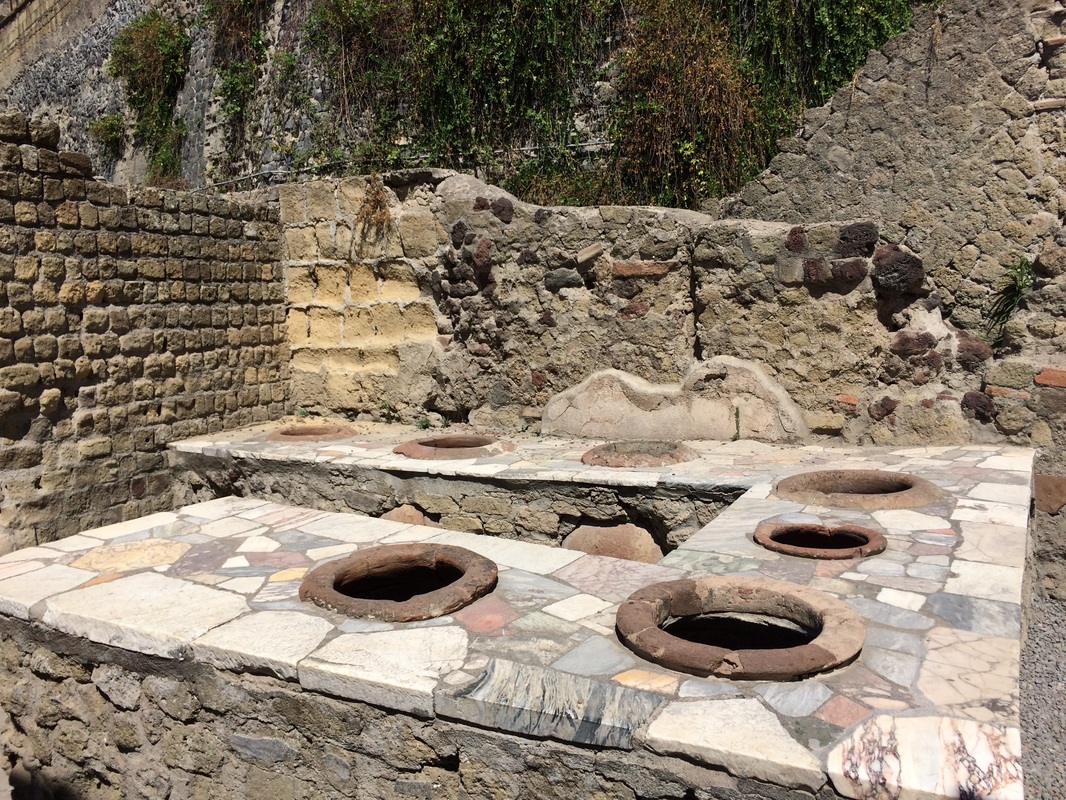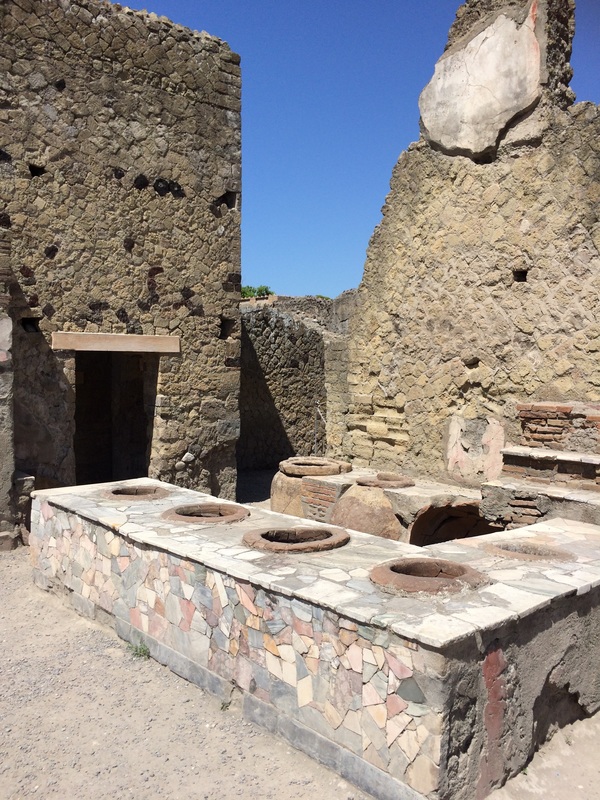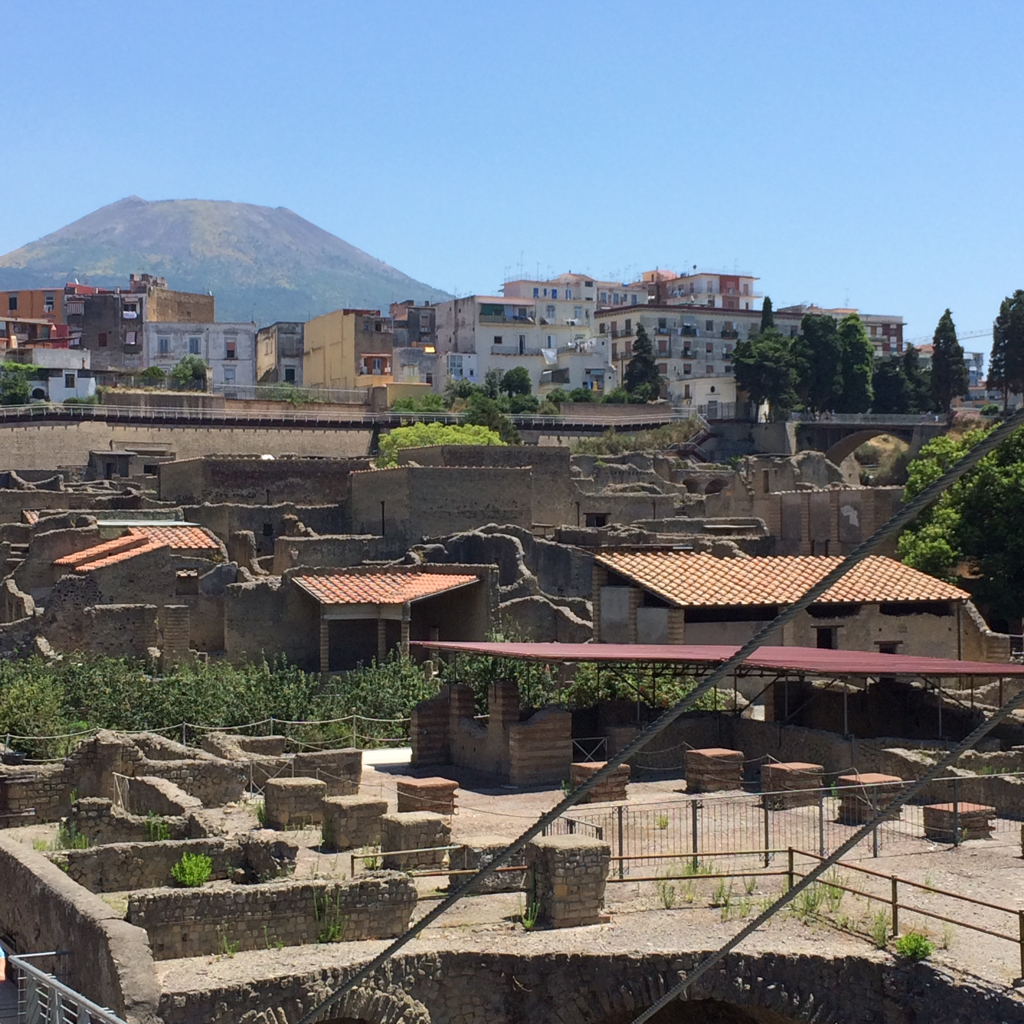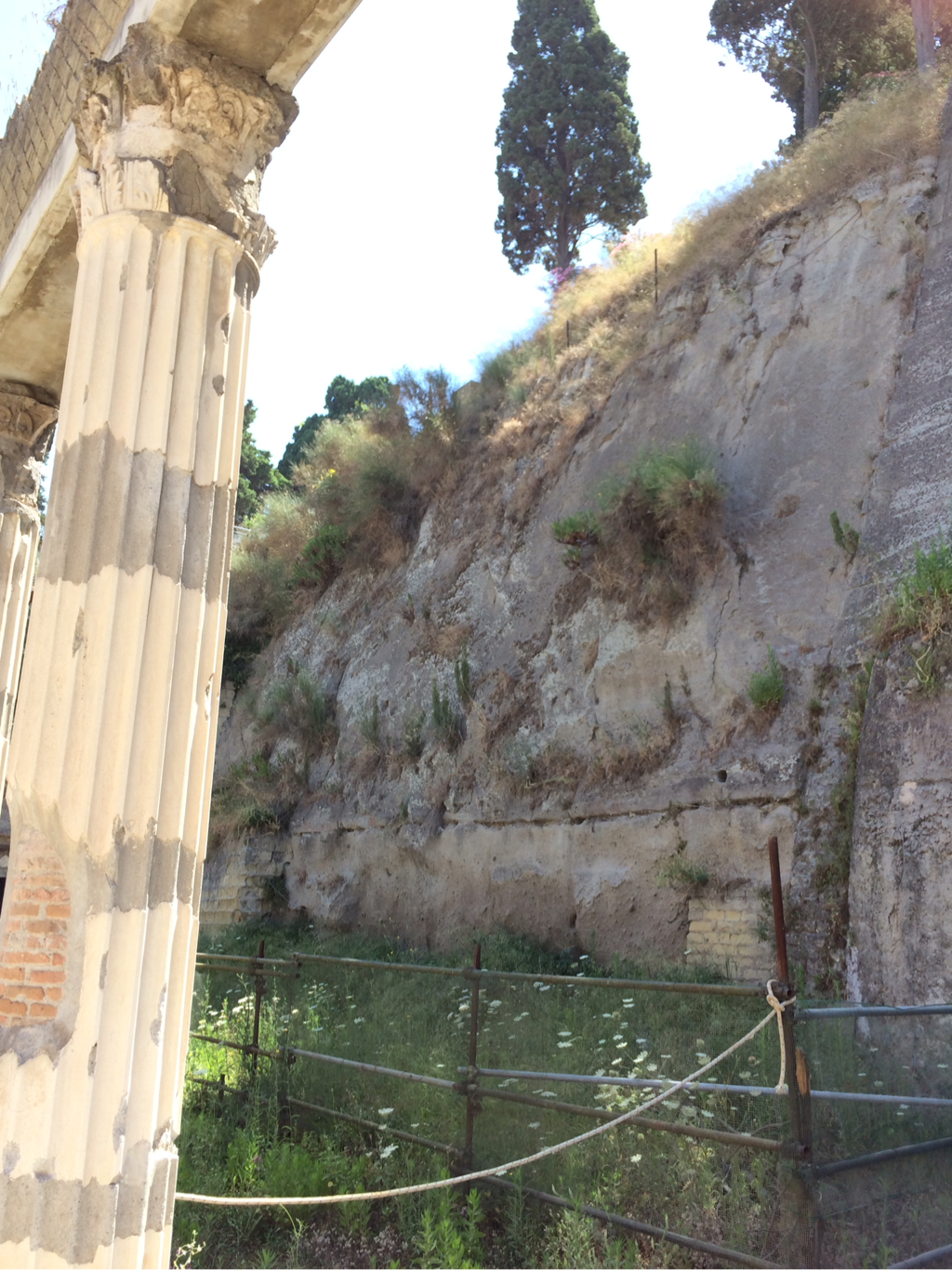Herculaneum Visitor's Guide
Know as Ercolano in Italian, Herculaneum was the other major city that was destroyed in the eruption. While Pompeii was a middle-class town, Herculaneum was a seaside resort that catered to weathier Romans. Inside you will find many images of the well-preserved city. Please note that in the final section, there are images of the skeletons uncovered in the boat houses. These can be difficult to view.
College of the Augustals
An order of freedmen, the Augustales built this structure during the reign of Augustus. It was believed to house statues of both Julius Caesar and Augustus. There are mythological inspired wall paintings depicting scenes from the life of Hercules. In the center is an image of the ascension of Hercules to Mt. Olympus. On the left you can see Hera, Athena, and Zeus watching his rise to Mt. Olympus. On the right, Hercules is having an argument with Achelous, presumably about Deianira.
|
The Bicentenary House
This is a great example of a two-story house in ancient Rome. This Patrician home, although closed off to crowds, has evidence of frescoes and mosaics. The facade gives us an idea of the grandeur of this home. The upper rooms of the house were most likely rented out to provide another source of income for the owners.
The Large Portal House
Notice how the brick columns are half-columns, not full circular ones. The columns are in the Corinthian style and are topped with statues of the Victories.
To the left you can see one of the town's many public water fountains. |
Pottery
The pottery shown here was placed in the lower level of the Bicentenary House. It is unclear if this room was a shop or if this could have been a storage area within the home.
Statue and Fountain of the Hydra
This statue made of bronze depicts a 5 headed Hydra wrapped around a tree. It is interesting that there are various accounts of the number of heads the Hydra had. This statue is found within a large gymnasium. Walking from the outdoor space into a covered room, this area housed a swimming pool. According to New Guide: Herculaneum, water was supplied to the swimming pool through each head of the Hydra. How magnificent!
|
Sights to see in Herculaneum
|
The Boat Houses
After making your way through the city, you will find the boat houses. Inside of the boat houses are the skeletons of the people of Herculaneum who were waiting to be rescued by the Roman navy. You are able to see how people were huddled together, their bodies curled up. They died when an intense pyro-clastic flow descended upon Herculaneum.
|
The House of Neptune and Amphitrite is a lovely two-story home. It features an outdoor triclinium (dining room) with a brilliantly colored mosaic of Neptune and his nereid wife, Amphitrite.
The House of the Deer. This majestic villa was given this name because of the statues found of deer being attacked by hunting dogs.
The Thermopolium is an ancient fast food restaurant. Food was scooped out of the pots. Nearby is the pistrinum where they had a mill and made bread.
|
Here you are able to see Mt. Vesuvius looming in he distance. You can also see the modern town of Ercolano, which was built upon the ash of the eruption.
You can see in this image just how much ash has covered the town of Herculaneum.

This work is licensed under a Creative Commons Attribution-NonCommercial-NoDerivatives 4.0 International License.
Proudly powered by Weebly
